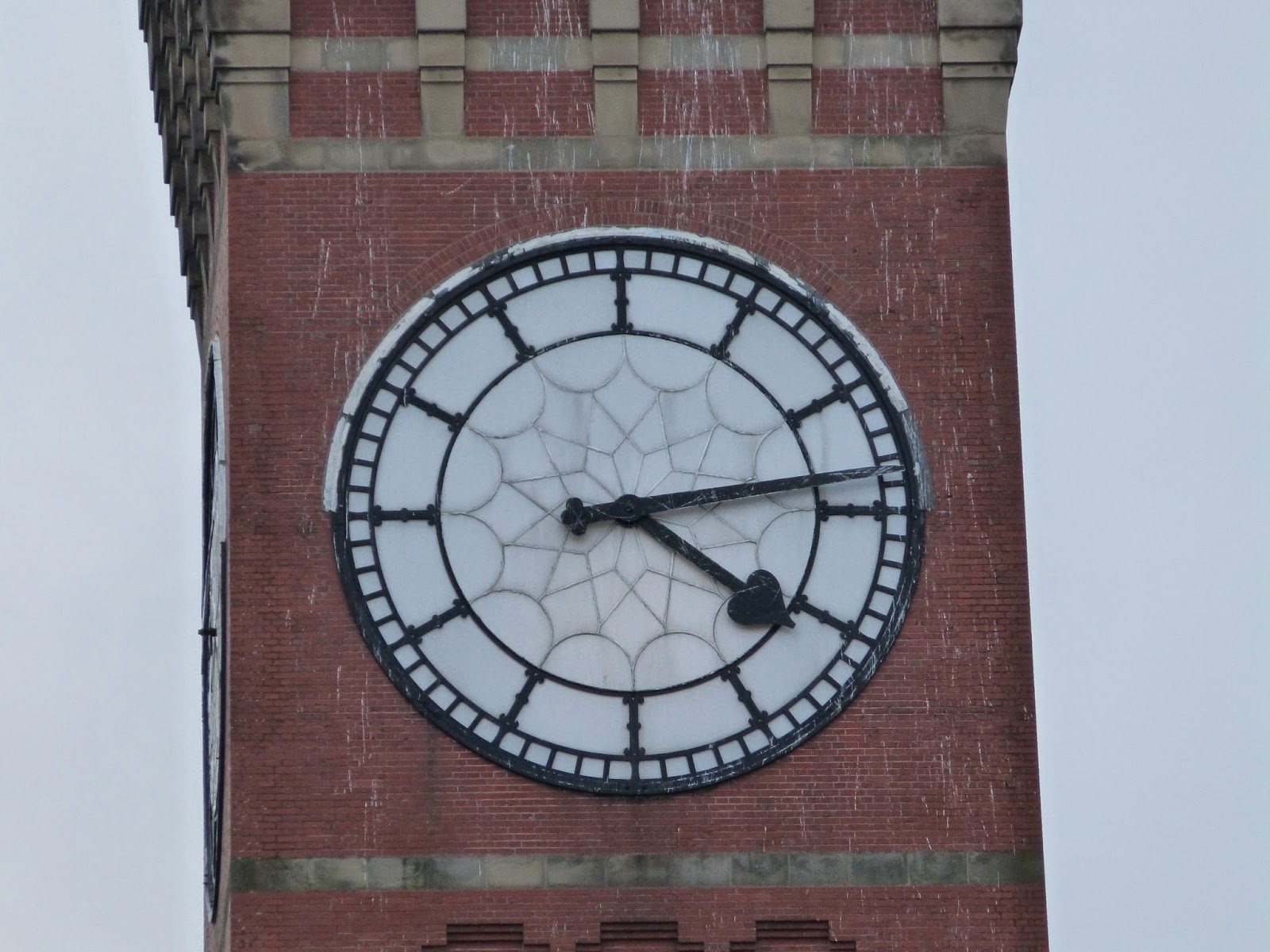Our first location is the Bournville Baths of 1904 on Bournville Lane, and part of the Bournville estate established by the Cadbury chocolate company.
The contrast with the more modern building surrounding it works quite well, although the street furniture detracts a little.
Right next door is the recreation ground, and its amazing half-timbered pavilion of 1902. The building is slightly over the top for its functions, but who cares?
The clock itself is very simple, and faces out onto the grounds.
Turning into Linden Road we start to pass the entrances to the Cadbury factory and to its visitor attraction Cadbury World. No time for chocolate tours today as we have plenty of clocks to seek out. Including this example on one of the gatehouses.
A short way to the north along Linden Road is this amazing bell tower.
And all the more amazing is it is on the Bournville Junior School of 1905, and is accompanied by a lovely clock.
"Carpe Diem" - seize the day.
The whole of Bournville is worth exploring (probably on a sunnier and calmer day) as there are all sorts of gems.
With reference to clocks, you can spot this example tucked away behind the premises fronting Sycamore Road.
Time for a little stretch of the legs now, up Linden Road, into Oak Tree Lane, and then right into Bristol Road. Now the huge clock tower of the University of Birmingham (forever known as Edgbaston Poly to this Aston graduate) hoves into view.
But before we get there (as it can be seen from a long way off), we make a quick diversion into Dale Road to visit the student accommodation of Jarratt Hall.
At last we reach the university campus itself. This immensely tall structure is the Joseph Chamberlain Memorial Clock Tower, named after the first Chancellor of the university (and various other public offices as we have seen elsewhere in Birmingham).
The tower is modelled on the Torre del Mangia in Siena, and was designed by Aston Webb and Ingress Bell. It was completed in 1908. There are different versions of how tall it is, but it is at least 100 metres. This height was put to good use in 1940 when it was used for radar experiments.
The clock is by Joyce of Whitchurch, with a face diameter of 5.25 metres. The minute hand is 4.1 metres long.
Elsewhere on the campus is the more modern Public Health building.
On the other side of the Worcester and Birmingham Canal is the Queen Elizabeth Hospital. This massive complex has another tall clock tower with an enormous dial, seemingly providing a challenge to its university neighbour.
To the west of the hospital campus is the much newer building. Here the clock is inside the main reception area, which I suppose makes more sense from the patient's point of view.
A walk to the north brings us to the High Street in Harbourne.
The old school building is now a branch of Prezzo and I think is used for other purposes as well.
It is a shame it is no longer a school, but it is pleasing to see that the building and its clock tower have been retained and is looking in good health.
Talking of schools, at the end of the High Street we turn into Somerset Road to visit the Blue Coat School and its pleasant grounds.
Following the Harbourne Road we eventually meet the less salubrious setting of the Hagley Road.
The Ivy Bush pub is on the junction of Hagley Road with Monument Road.
A little way east towards the city centre is The Oratory of Saint Philip Neri, built in 1851.
We are nearing the end of our walk now. the penultimate site is Morrison's supermarket Hagley Road at Five Ways.
And finally, the Five Ways clock.

























































No comments:
Post a Comment